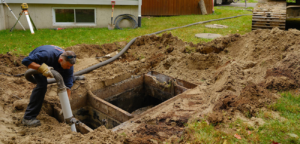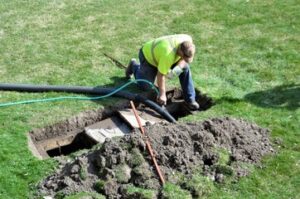Pests come to homes and yards seeking food, water, and shelter. Removing trash, pet food, compost, and garden refuse reduces their attraction.
Repair cracks and rips in walls, screens, and foundation. Keep garages and other outbuildings clean. Contact Pest Control Bakersfield CA now!

Some natural forces influence the number and kind of pests, helping or hindering Pest Control.
Prevention
Pests can cause damage or be a health hazard. They can spoil food, contaminate surfaces, and harm people when they bite or sting (like fleas, ticks, and bed bugs). Some are merely annoying, like rodents, cockroaches, clothes moths, and silverfish. Others spread diseases, such as salmonella, hantavirus, and leptospirosis. Many have a disgusting appearance, or they can irritate skin or be unpleasant to smell, such as cluster flies, pine seed bugs, and earwigs.
Some pests can be kept at bay by good sanitation and cleaning practices. This can include storing food in sealed containers, sanitizing work areas regularly, and picking up trash regularly. Pests that can’t be prevented are less of a problem when trapped or killed than allowed to continue reproducing and spreading. This can be done using physical barriers, such as screens on windows and doors, traps or bait stations, or through biological controls such as predators, parasitoids or nematodes.
Prevention is the best way to deal with pests, but it’s not always possible or practical. A comprehensive pest management program that includes avoiding, blocking, and controlling is essential.
Avoiding pests can be as simple as keeping garbage and compost piles away from the building, using a cover over a chicken coop, and sealing cracks in walls and around utility lines. Removing standing water by draining bird baths, removing clogged rain gutters, and repairing leaky pipes can also help deter pests. Regular inspections of the exterior of a home or office can find many potential entry points, such as holes in the foundation, loose siding and roof vents.
Blocking pests can be as simple as placing traps or bait stations where they’re likely to be found. Identifying and treating the problem area, based on inspection results, is another effective method for controlling pests. This type of treatment is especially important in a food or beverage plant to prevent contamination.
Control is the next step in a pest management program, once an infestation has been discovered and preventive measures have failed. This involves killing or suppressing the pests to bring their numbers down to an acceptable level, or at least stopping them from growing to a dangerous size. Eradication is rarely attempted in outdoor pest situations, but it is an option for enclosed environments where the pests can be more easily contained and managed.
Suppression
When pest populations reach a level that makes control necessary, several approaches can be used. These include exclusion or quarantine, repulsion, physical removal or chemical treatment. Most control methods are intended to reduce the number of pests beyond a sustainable level or to prevent their spread into areas where they will cause damage.
Preventing a pest infestation is easier than controlling an already established one, so prevention tactics are key to successful management. This includes simple assessments of the environment, such as identifying places where potential pests could shelter (e.g., open waste bins near a farm or garden), food sources (e.g., a corn field next to a vegetable patch) or watering locations (e.g., a pond nearby a crop). It is also important to know the life cycle of your pests, so you can develop strategies to disrupt their cycles and limit their numbers or impact on your crops.
Biological controls use predators, parasites, and pathogens to manage pests. These organisms can suppress populations by eating or infecting the pests themselves, or they may interfere with their development or reproduction. Examples of biological control agents include birds, reptiles and fish that feed on pests, insect pathogens that kill the insects, and nematodes that destroy root systems of weeds.
Natural forces that affect pest population growth and damage include climate, natural barriers such as mountains or bodies of water, availability of food and water, roosting sites, and the amount of cover and water available. Changing any of these factors can help you prevent or control pest problems.
Chemical controls are often needed to supplement and complement preventive measures. Most pesticides are chemicals, but there are organic compounds and biorationals that can provide similar benefits. Organic compounds and biorationals, such as fungi and beneficial bacteria, are non-toxic to humans and the environment and can be used to replace conventional pesticides. Bacillus thuringiensis (Bt) is a well-known example of a naturally occurring soil bacteria that has been engineered to make a bactericide that can kill many kinds of insects. This type of product is more environmentally friendly than most pesticides, but it takes time for the bacterium to grow and needs to be applied correctly.
Eradication
Pest control refers to the practice of eliminating unwanted organisms, such as rodents, cockroaches, termites, mosquitoes and bed bugs. These vermin are known to cause many problems including health issues, destruction of buildings and environments as well as damage to personal belongings. The term pests also encompasses diseases and parasites that are spread by these organisms. There are several methods of pest control, ranging from physical to chemical.
A physical pest control method involves removing the organisms by hand or with mechanical means. This may involve removing nests, trapping or killing the pests or spraying them with chemicals. This method of pest control can be costly, time-consuming and may leave residues that are detrimental to the environment. It is also a more aggressive approach to pest management and is often used when the problem is severe or the infestation is widespread.
Chemical pest control uses insecticides, herbicides, fungicides and other substances to kill or repel unwanted organisms. These chemicals disrupt the nervous systems, metabolisms or reproductive systems of the pests, thereby causing them to die or not reproduce. Chemicals are usually applied through the use of a spray bottle that can be sprayed directly onto the pests or their habitats. It is important to read the label of any pesticide before using it. This contains detailed instructions and information on how to use the product safely and effectively.
Biological pest control relies on the natural enemies of the pest, such as predators, parasites and disease-causing microbes, to reduce populations. It is an essential component of Integrated Pest Management. Biological control programs must be carefully planned, monitored and evaluated. They are complex and often require cooperation among many individuals and organizations. To be successful, they must be implemented on a local, regional and international basis. Eradication is a difficult and challenging goal, as it requires certification that all reservoirs of the responsible microbe have been eradicated. This can be a very difficult task, particularly when the disease has been transmitted to humans. It is estimated that eradication of some infectious diseases will be impossible, as the infectious microbes will always exist in some uncontrolled reservoir (Cochi and others 1998). The CDC defines a disease as “eradicated” when the rate of transmission to healthy people is zero.
Monitoring
A pest control company must regularly inspect and monitor the effectiveness of its activities. The inspections will focus on the environment, the underlying conditions that attract pests and the pest control measures in place. This will help a company to determine when the pests are most vulnerable and thus the best time to apply preventive measures. This will also help to identify any changes in the environment that could affect the success of the pest control measures.
The inspections are a vital part of Integrated Pest Management (IPM), which emphasizes treating only for pest problems that have been observed and identified. This method of pest control helps to reduce environmental impact by minimizing the use of toxic chemicals. To be effective, inspections should take place daily to weekly, depending on the environment and the type of pest being treated. For instance, a routine inspection of a residential home may include looking under leaves, along foundations and at bait stations for mosquitoes to check for signs of infestation.
Landlords are often responsible for pest control in rental properties. It’s important for them to ensure that the premises meet health and safety standards so that they can be occupied safely by tenants. If they find evidence of pests in the property, they should immediately contact a pest control professional for advice and assistance.
Food manufacturing environments need to have robust pest control measures in place to comply with health and safety regulations. This includes preventing pests from entering the production facility and ensuring that all raw materials are free from contamination by pests. A pest sighting register should be maintained to record all pest sightings and this is ideally carried out by both the food manufacturer and its pest control contractor.
Biological pest control uses natural predators and parasitoids to manage pest populations. It’s one of the oldest forms of pest control and can be as simple as releasing ladybugs to eat aphids or as sophisticated as introducing microbe-based solutions engineered from bacteria to kill off disease-causing pathogens. Food manufacturers often prefer this method of pest control because it doesn’t involve the use of chemical compounds and can be environmentally friendly.



